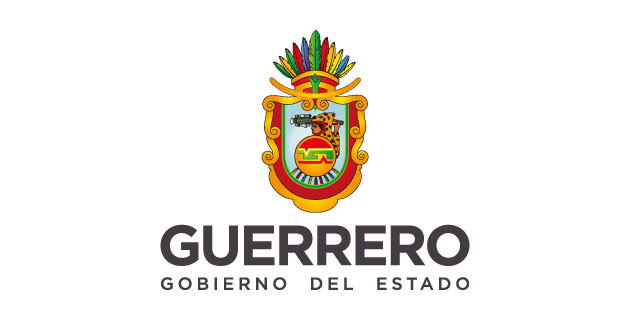
Today we will talk about the beautiful state of warrior, but before we begin, we must remember some important dates, events that marked this state and I will give a small introduction. Are you ready? Let us begin !!!
The state of Guerrero is one of the 32 states of the Mexican Republic. It represents 3.2% of the national territory. Its capital is the city of Chilpancingo de los Bravos and is divided into 81 municipalities.
Who was the founder? How did all this happen?
The name of the state of Guerrero was established thus, as of October 27, 1849, in honor of the leader of the national independence Vicente Guerrero Saldaña, born in this region.
On May 15, 1849, President José Juaquín de Herrera sent to Congress the initiative to create the state of Guerrero, with the territory of the states of Michoacán, Puebla and Mexico. The initiative was approved by the Chamber of Deputies on October 20 and by the Senate on October 26.
On October 27, 1849, in solemn session of the Congress of the Union, the Free and Sovereign State of Guerrero was declared legally constituted, and General Juan Álvarez was appointed interim general commander. Since then, the warrior state has that name.
Geographic location
The state of Guerrero is located totally in the tropical zone to the south of the central part of the Mexican Republic.
Extreme geographic coordinates:
North 18º 48´, South 16º 18´ North Latitude
To the east 98º 03´ and west 102º 12´ of west longitude.
Surface:
Guerrero has an extension of 63,596 square kilometers (Km2), so it occupies the 14th place nationwide. Its shape is irregular; The greatest width is 222 kilometers and the greatest length is 461 kilometers.
Territorial percentage:
The state of Guerrero represents 3.2% of the country's surface.
Colindancias:
It limits to the north with the states of: Michoacán, México, Morelos and Puebla; to the south, with the Pacific Ocean; to the east with Puebla and Oaxaca; and to the west with Michoacán.
The state of Guerrero is one of the 32 states of the Mexican Republic. It represents 3.2% of the national territory. Its capital is the city of Chilpancingo de los Bravos and is divided into 81 municipalities.
Who was the founder? How did all this happen?
The name of the state of Guerrero was established thus, as of October 27, 1849, in honor of the leader of the national independence Vicente Guerrero Saldaña, born in this region.
On May 15, 1849, President José Juaquín de Herrera sent to Congress the initiative to create the state of Guerrero, with the territory of the states of Michoacán, Puebla and Mexico. The initiative was approved by the Chamber of Deputies on October 20 and by the Senate on October 26.
On October 27, 1849, in solemn session of the Congress of the Union, the Free and Sovereign State of Guerrero was declared legally constituted, and General Juan Álvarez was appointed interim general commander. Since then, the warrior state has that name.
Geographic location
The state of Guerrero is located totally in the tropical zone to the south of the central part of the Mexican Republic.
Extreme geographic coordinates:
North 18º 48´, South 16º 18´ North Latitude
To the east 98º 03´ and west 102º 12´ of west longitude.
Surface:
Guerrero has an extension of 63,596 square kilometers (Km2), so it occupies the 14th place nationwide. Its shape is irregular; The greatest width is 222 kilometers and the greatest length is 461 kilometers.
Territorial percentage:
The state of Guerrero represents 3.2% of the country's surface.
Colindancias:
It limits to the north with the states of: Michoacán, México, Morelos and Puebla; to the south, with the Pacific Ocean; to the east with Puebla and Oaxaca; and to the west with Michoacán.

Population:
In 2015, in the state of Guerrero they live:
Woman:
1 834 192
Of the men:
1 699 059
Total:
3 533 251
58% of the population
it's urban
42% of the population
it's rural
municipalities that make up the warrior state
1) Municipality of Chilpancingo de los Bravo
Chilpancingo de los Bravo Town Hall
2) Municipality of Acapulco de Juárez
Acapulco City Council of Juárez
3) Municipality of Acatepec
Acatepec Town Hall
4) Municipality of Ahuacuotzingo
Ahuacuotzingo Town Hall
5) Municipality of Ajuchitlán del Progreso
Ajuchitlán del Progreso Town Hall
6) Municipality of Alcozauca de Guerrero
Alcozauca de Guerrero City Council
7) Municipality of Alpoyeca
Alpoyeca Town Hall
8) Municipality of Apaxtla de Castrejón
Apaxtla de Castrejón Town Hall
9) Municipality of Arcelia
Arcelia town hall
10) Municipality of Atenango del Río
City Hall of Atenango del Río
11) Municipality of Atlamajalcingo del Monte
Atlamajalcingo del Monte Town Hall
12) Municipality of Atlixtac
Atlixtac Town Hall
13) Municipality of Atoyac de Álvarez
Atoyac de Álvarez Town Hall
14) Municipality of Ayutla
Ayutla Town Hall
15) Municipality of Azoyú
Azoyú Town Hall
16) Municipality of Benito Juárez
Benito Juárez Town Hall
17) Municipality of Buenavista de Cuéllar
City of Buenavista de Cuéllar
18) Municipality of Chilapa de Álvarez
Chilapa de Álvarez Town Hall
19) Municipality of Coahuayutla de José María Izazaga
Coahuayutla City Council of José María Izazaga
20) Municipality of Cochoapa el Grande
Cochoapa el Grande Town Hall
21) Municipality of Cocula
Cocula Town Hall
22) Municipality of Copala
Copala City Hall
23) Municipality of Copalillo
Copalillo Town Hall
24) Municipality of Copanatoyac
Copanatoyac Town Hall
25) Municipality of Coyuca de Benítez
Coyuca de Benitez Town Hall
26) Municipality of Coyuca de Catalán
City of Coyuca de Catalán
27) Municipality of Cuajinicuilapa
Cuajinicuilapa Town Hall
28) Municipality of Quéác
Quéác Town Hall
29) Municipality of Cuautepec
Cuautepec Town Hall
30) Municipality of Cuetzala del Progreso
Town Hall of Cuetzala del Progreso
31) Municipality of Cutzamala de Pinzón
Town Hall of Cutzamala de Pinzón
32) Eduardo Neri Municipality
Eduardo Neri Town Hall
33) Municipality of Florencio Villarreal
Florencio Villarreal Town Hall
34) Municipality of General Canuto A. Neri
Canuto City Council A. Neri General
35) General Municipality Heliodoro Castillo
General City Hall Heliodoro Castillo
36) Municipality of Huamuxtitlán
Huamuxtitlán Town Hall
37) Municipality of Huitzuco de los Figueroa
Town hall of Huitzuco de los Figueroa
38) Iguala Municipality of Independence
Iguala City Hall of Independence
39) Municipality of Igualapa
Igualapa Town Hall
40) Municipality of Iliatenco
Iliatenco City Hall
41) Municipality Ixcateopan de Cuauhtémoc
Ixcateopan City Hall of Cuauhtémoc
42) Municipality of José Joaquín de Herrera
City Council of José Joaquín de Herrera
43) Municipality of Juan R. Escudero
Juan R. Escudero Town Hall
44) Municipality of Juchitán
Juchitán Town Hall
45) Municipality of La Unión de Isidoro Montes de Oca
La Unión City Council of Isidoro Montes de Oca
46) Municipality of Leonardo Bravo
Leonardo Bravo Town Hall
47) Municipality of Malinaltepec
Malinaltepec Town Hall
48) Municipality of Marquelia
Marquelia Town Hall
49) Municipality of Mártir de Cuilapan
Martyr City Hall of Cuilapan
50) Municipality of Metlatónoc
Metlatónoc Town Hall
51) Municipality of Mochitlán
Mochitlan Town Hall
52) Municipality of Olinalá
Olinalá Town Hall
53) Municipality of Ometepec
Ometepec Town Hall
54) Municipality of Pedro Ascencio Alquisiras
Pedro Ascencio Alquisiras Town Hall
55) Municipality of Petatlán
Petatlan Town Hall
56) Municipality of Pilcaya
Pilcaya town hall
57) Municipality of Pungarabato
Pungarabato Town Hall
58) Municipality of Quechultenango
Quechultenango Town Hall
59) Municipality of San Luis Acatlán
San Luis Acatlán Town Hall
60) Municipality of San Marcos
San Marcos Town Hall
61) Municipality of San Miguel Totolapan
San Miguel Totolapan Town Hall
62) Municipality of Taxco de Alarcón
Taxco de Alarcón Town Hall
63) Municipality of Tecoanapa
Tecoanapa Town Hall
64) Municipality of Tecpan de Galeana
Tecpan de Galeana Town Hall
65) Teloloapan Municipality
Teloloapan Town Hall
66) Municipality of Tepecoacuilco de Trujano
Tepecoacuilco de Trujano Town Hall
67) Municipality of Tetipac
Tetipac Town Hall
68) Municipality of Tixtla de Guerrero
Tixtla de Guerrero City Council
69) Municipality of Tlacoachistlahuaca
Tlacoachistlahuaca Town Hall
70) Municipality of Tlacoapa
Tlacoapa Town Hall
71) Municipality of Tlalchapa
Tlalchapa Town Hall
72) Municipality Tlalixtaquilla de Maldonado
Town Hall of Tlalixtaquilla de Maldonado
73) Municipality of Tlapa de Comonfort
Town Hall of Tlapa de Comonfort
74) Municipality of Tlapehuala
Tlapehuala Town Hall
75) Municipality of Xalpatláhuac
Xalpatláhuac Town Hall
76) Municipality of Xochihuehuetlán
Xochihuehuetlán Town Hall
77) Municipality of Xochistlahuaca
Xochistlahuaca Town Hall
78) Municipality of Zapotitlán Tablas
Zapotitlán Tablas Town Hall
79) Municipality of Zihuatanejo de Azueta
Zihuatanejo de Azueta Town Hall
80) Municipality of Zirándaro
Zirándaro Town Hall
81) Municipality of Zitlala
Zitlala Town Hall
dialects
Did you know that? 4 of 33 original languages survive in Guerrero
Náhuatl, Mixteco, Amuzgo and Tlapaneco, each with several dialects.
Of the 33 languages spoken in Guerrero during the 16th century, only four survive today: Nahuatl, Mixtec, Amuzgo and Tlapaneco, which are divided into other dialects that show great vitality.
The missing languages left no testimony, due in part to the fact that the priests who came to the area were responsible for catechizing the indigenous people and neglected their description.

The flora and fauna
is characterized by being predominantly in warm tropical climates, although Guerrero, due to its own morphology, has a geographical account of other species that are more common in climates and medium heights.
Flora
Amateurs, mangroves and palm groves can observe along the coast, especially in the Acapulco and Costa Grande regions.
In the foothills stand out: chijol, huanacastle, parota, spring, ramón, mahogany and red cedar. The oaks and ocotes appear from 500 meters of altitude and arise in the mountains, with white stick, madrono, linalóe, aile, pine, pine and conifers.
In semi-desert areas there are varieties of Huizache, mesquite and a great variety of cacti and agaves.
For the cabinetmaking it has wood of amate, mahogany, ebony, oak, ash, walnut, pine, wood stick, parota, oak, tepeguaje and bankruptcy. Tanning plants include mangrove, nanche, yellow vine, madrollo, colorado, scallop, lean, copalchi and timbre and to produce dyes, achiote, huizache, mahuitle, Brazil stick, Campeche stick, dragon blood, tampinceran and then.
Fruit trees such as lemon, cocoon, coconut, caimito, huamúchil, nanche, mango, tamarind, ilama, almond, breadfruit, marañona, soursop, guava and melon They are common in Guerrero.
Christmas flower
This plant, native to Mexico, is part of the Euphorbiaceae family. This species is especially used in gardening. But, its main use is in floriculture, especially at Christmas, as an indoor plant.
is characterized by being predominantly in warm tropical climates, although Guerrero, due to its own morphology, has a geographical account of other species that are more common in climates and medium heights.
Flora
Amateurs, mangroves and palm groves can observe along the coast, especially in the Acapulco and Costa Grande regions.
In the foothills stand out: chijol, huanacastle, parota, spring, ramón, mahogany and red cedar. The oaks and ocotes appear from 500 meters of altitude and arise in the mountains, with white stick, madrono, linalóe, aile, pine, pine and conifers.
In semi-desert areas there are varieties of Huizache, mesquite and a great variety of cacti and agaves.
For the cabinetmaking it has wood of amate, mahogany, ebony, oak, ash, walnut, pine, wood stick, parota, oak, tepeguaje and bankruptcy. Tanning plants include mangrove, nanche, yellow vine, madrollo, colorado, scallop, lean, copalchi and timbre and to produce dyes, achiote, huizache, mahuitle, Brazil stick, Campeche stick, dragon blood, tampinceran and then.
Fruit trees such as lemon, cocoon, coconut, caimito, huamúchil, nanche, mango, tamarind, ilama, almond, breadfruit, marañona, soursop, guava and melon They are common in Guerrero.
Christmas flower
This plant, native to Mexico, is part of the Euphorbiaceae family. This species is especially used in gardening. But, its main use is in floriculture, especially at Christmas, as an indoor plant.

Encino
This monoecious tree belongs to the Fagáceae family. In the Mexican state of Guerrero, it forms one of the most useful and environmentally important botanical groups. This is due to its diversity, the breadth of its use and the extensive surface area it occupies.
Its height can range between 15 and 40 meters. The branches are furrowed and, in the juvenile stage, be pubescent. It has scaly buds, formed in the armpits or at the ends of the branches.

Pochote
This tree, which is part of the Malvaceae family, is found in tropical deciduous forests.
This species has a height that could vary between 4 and 15 meters, although some could have up to 20 meters. The trunk is conical, with a sturdy base. It has a smooth and gray bark, being covered with hard spines, up to 6 centimeters.
The young branches are smooth or with fine reddish hairs. In addition, they have large numbers of lenticels and often specific small sharp spines. When they are adults, the branches are smooth, reddish and pubescent.

fauna
The fauna is combined between life on land and that which develops in the sea or in rivers and lagoons. Only the most common species are mentioned below:
Insects: wasps, bees, cicada, termites, nopales, jumiles, scorpions, butterflies, lions and mosquitoes.
Reptiles: chameleon, crocodile, coral, snail viper, chirrionera, scorpion, iguana, tilcuate and turtle.
Birds: eagle, owl, calandria, cardinal, carpenter, quail, hummingbird or chupamirto, parrot, chachalaca, pheasant, cormorant or duck, tick, white heron, purple heron, seagull, hawk, swallow, sparrow, macaw, guaco, huco, Goldfinch, owl, parrot, pigeon, pelican, spring, broken bones, owl, thrush, magpie, pichince, carrot and vulture.
Mammals: squirrel, armadillo, cacomixtle, rabbit, coyote, wildcat, wild boar, jaguar, wolf, raccoon, marten, anteater, ounce, porcupine, puma or American lion, badger, tigrillo, tlacuache, tuza, fox, skunk.
Fish: catfish, skipjack, carp, dogfish, curvina, charal, guachinango, horse mackerel, sole, ready, mojarra, snapper, robalo, hoarse, saw and shark.
Mollusks: abalone, snail, oyster, clam, octopus and ax callus.
Crustaceans: squid, shrimp, crabs, lobsters and shrimp.
Pacific Chachalaca
The peaceful chachalaca is a galliform bird belonging to the Cracidae family. It is originally from Mexico, distributed from the south of the state of Sonora to the isthmus of Tehuantepec, in Chiapas.
This species measures between 58.5 and 68.5 centimeters, with an approximate weight of 760 grams. Females are usually a little smaller. They have a long neck and a long and wide tail. The tarsuses are robust and gray in color.

Gila's monster
This poisonous lizard is native to the warm and arid regions of northern Mexico and the southwestern United States.
The figure of this carnivorous species is large, reaching between 35 and 59 centimeters long. Its legs are small, with powerful claws. It has a thick and short tail, where it stores fat. This is the energy consumption in hibernation or when food is scarce.
The skin is rough, presenting an aspect of beads on the dorsal scales. On the contrary, in the ventral part the scales are smooth.
As for coloring, this lizard can have cross-linked patterns in black and yellow tones or in pink and black. Although in some species these colors are found in bands. The head, neck and legs are black.

customs and traditions
ACAPULCO
December 12th. Feast of the Virgin of Guadalupe. Processions and a war of flowers are made.
ALTAMIRANO CITY
August 15th. Feast of the Assumption of the Virgin. December 12, feast of the Virgin of Guadalupe, celebration with processions and dances of Pastoras, Moors and Tecuanes.
ATOYAC DE ÁLVAREZ
November 1 and 2. Celebrations and surveillance in the cemetery. December 12, processions and dance of Pastoras.
COYUCA DE BENÍTEZ
September 29th. The San Miguel Arcángel Day is celebrated with dances, processions, music and fair.
Easter. A great fair, dances and fireworks are celebrated with the celebration of Las Palmeras.
GREAT CROSS
May 3 Holy Cross Day that is celebrated with fair, music and dances of Moros.
CHILAPA
August 15th. Feast of the Assumption of the Virgin, celebration with dances of Moors.
CHILPANCINGO
15 th of May. San Isidro party.
June 13th. San Antonio party in the neighborhood of the same name, with music and fireworks.
September 21st. Feast of San Mateo in his neighborhood with dances of Tlacololeros and Santiagos.
This poisonous lizard is native to the warm and arid regions of northern Mexico and the southwestern United States.
The figure of this carnivorous species is large, reaching between 35 and 59 centimeters long. Its legs are small, with powerful claws. It has a thick and short tail, where it stores fat. This is the energy consumption in hibernation or when food is scarce.
The skin is rough, presenting an aspect of beads on the dorsal scales. On the contrary, in the ventral part the scales are smooth.
As for coloring, this lizard can have cross-linked patterns in black and yellow tones or in pink and black. Although in some species these colors are found in bands. The head, neck and legs are black.
customs and traditions
ACAPULCO
December 12th. Feast of the Virgin of Guadalupe. Processions and a war of flowers are made.
ALTAMIRANO CITY
August 15th. Feast of the Assumption of the Virgin. December 12, feast of the Virgin of Guadalupe, celebration with processions and dances of Pastoras, Moors and Tecuanes.
ATOYAC DE ÁLVAREZ
November 1 and 2. Celebrations and surveillance in the cemetery. December 12, processions and dance of Pastoras.
COYUCA DE BENÍTEZ
September 29th. The San Miguel Arcángel Day is celebrated with dances, processions, music and fair.
Easter. A great fair, dances and fireworks are celebrated with the celebration of Las Palmeras.
GREAT CROSS
May 3 Holy Cross Day that is celebrated with fair, music and dances of Moros.
CHILAPA
August 15th. Feast of the Assumption of the Virgin, celebration with dances of Moors.
CHILPANCINGO
15 th of May. San Isidro party.
June 13th. San Antonio party in the neighborhood of the same name, with music and fireworks.
September 21st. Feast of San Mateo in his neighborhood with dances of Tlacololeros and Santiagos.
EQUAL TO
November 1 and 2. Commemoration of all the saints and faithful departed. Holy Week with dances, music and processions.
IXCATEOPAN
January 1 Festivity in honor of the Santo Niño de Atocha with processions and dances. October 18, feast of San Lucas, dances of Moors, Tecuanes and music. September 26, feast in honor of Cuauhtémoc, pre-Hispanic dances and music. Carnival Tuesdays, they organize fair and procession.
TAXCO
January 17. Day of San Antonio Abad, with the blessing of animals in the atrium of the parish. January 18, patron saint of San Sebastián and Santa Prisca with a great fair, music and fireworks. During the month of May the Alarconian Days are held, with parties and cultural events.
September 8th. Day of the Nativity of the Virgin that is celebrated with dances and fireworks. Holy Week that is celebrated with representations and dramatic processions loaded with great realism, where the hooded brotherhoods participate in thick slopes bundles of thorny branches. End of November and beginning of December, it celebrates the National Silver Fair with a large number of artisanal and cultural events.
RED EARTH
March, 19. San José Day Festivities with music, processions and dances. The movable parties are celebrated in almost all the state, being the most outstanding those of the Carnival and of the Holy Week.
The state of Guerrero has a broad history that translates into ancient cultural traditions and treasures. Some of the protocols can be found in their handicrafts distributed throughout the regions of this federative entity. Therefore, we will talk about the most beautiful warrior crafts.
handicrafts
Paints on amate paper
The paintings on amate paper are those produced by the Nahua communities of Ameyaltepec, Maxela, Xalitla and San Agustín de las Flores. While such paper is brought from Puebla, the paintings in certain local pre-Hispanic codes codes. Its prominence is very popular among tourists and artisans who earned good income from this work..
November 1 and 2. Commemoration of all the saints and faithful departed. Holy Week with dances, music and processions.
IXCATEOPAN
January 1 Festivity in honor of the Santo Niño de Atocha with processions and dances. October 18, feast of San Lucas, dances of Moors, Tecuanes and music. September 26, feast in honor of Cuauhtémoc, pre-Hispanic dances and music. Carnival Tuesdays, they organize fair and procession.
TAXCO
January 17. Day of San Antonio Abad, with the blessing of animals in the atrium of the parish. January 18, patron saint of San Sebastián and Santa Prisca with a great fair, music and fireworks. During the month of May the Alarconian Days are held, with parties and cultural events.
September 8th. Day of the Nativity of the Virgin that is celebrated with dances and fireworks. Holy Week that is celebrated with representations and dramatic processions loaded with great realism, where the hooded brotherhoods participate in thick slopes bundles of thorny branches. End of November and beginning of December, it celebrates the National Silver Fair with a large number of artisanal and cultural events.
RED EARTH
March, 19. San José Day Festivities with music, processions and dances. The movable parties are celebrated in almost all the state, being the most outstanding those of the Carnival and of the Holy Week.
The state of Guerrero has a broad history that translates into ancient cultural traditions and treasures. Some of the protocols can be found in their handicrafts distributed throughout the regions of this federative entity. Therefore, we will talk about the most beautiful warrior crafts.
handicrafts
Paints on amate paper
The paintings on amate paper are those produced by the Nahua communities of Ameyaltepec, Maxela, Xalitla and San Agustín de las Flores. While such paper is brought from Puebla, the paintings in certain local pre-Hispanic codes codes. Its prominence is very popular among tourists and artisans who earned good income from this work..
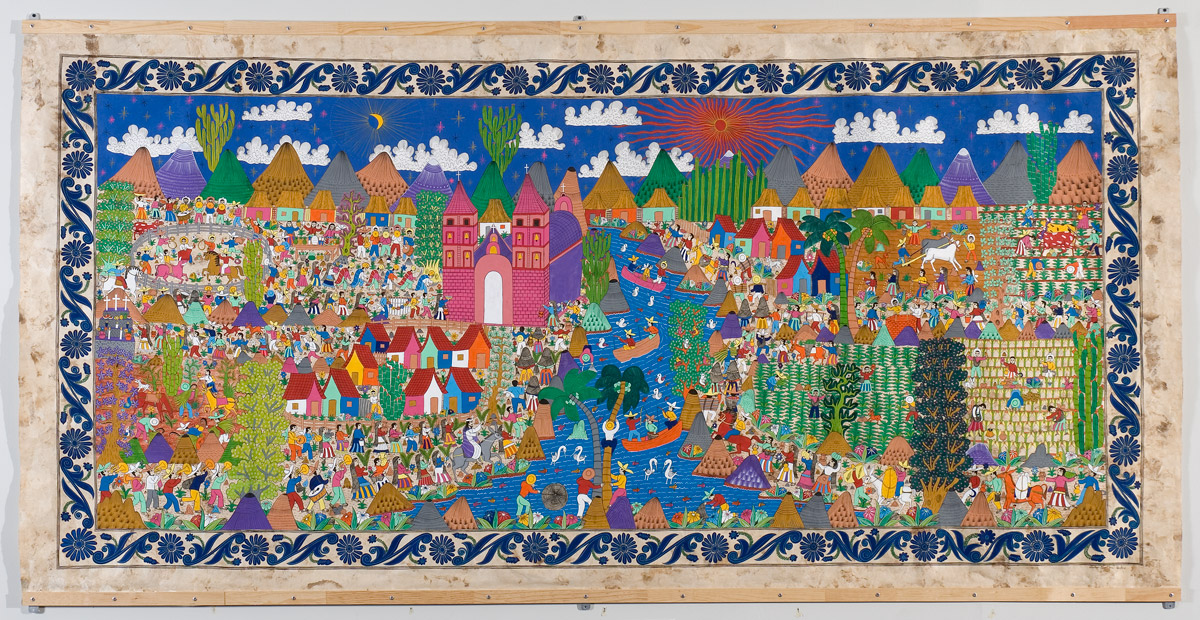
Lac de Olinalá
Perhaps the most famous of all the crafts of Guerrero. It is one of the Mexican products that have a Denomination of Origin and its decorations are mainly in boxes. Almost everything is distinguished by the scratching technique and is a strong local tradition.
Silver
Since pre-Hispanic times, silver work has been a hallmark of this region. Of the crafts of Guerrero, this is particular of Taxco and is used in the production of jewelry. So much is his recognition that the National Silver Fair takes place every year.

Palm leaf fabric
One of the crafts of Guerrero that is not as well known, although of the most varied. Because its raw material is abundant, it is widely used to create different accessories. You can find bags and hats, as well as small animals, fans and duffel bags
.
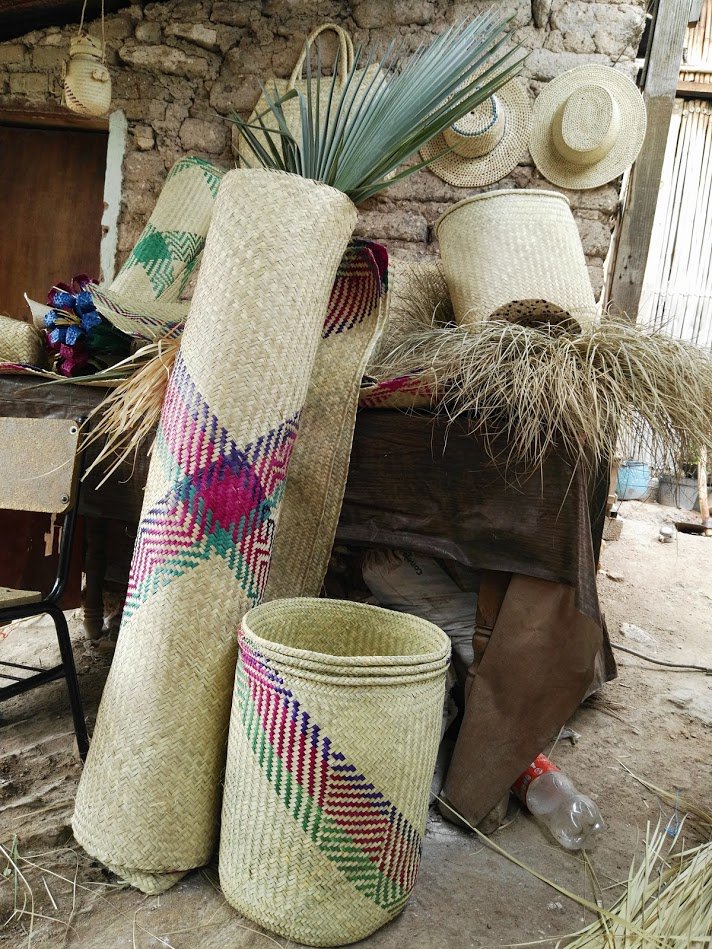
Textil
La población indígena ha sido responsable de preservar y difundir este tipo de artesanías. Las mujeres mixtecas, nahuas y amuzgos continúan usando sus prendas tradicionales, muchas hechas a mano. El más distintivo es el huipil, aunque también hay telares, enredos, blusas bordadas con lentejuelas, faldas, etc.

Ceramics
It is one of the oldest and most practiced warrior crafts. There are many utilitarian items such as utensils, plates, water coolers and bowls. There are also ornaments such as candlesticks, animal and human figures.

Wood
Finally, wood is another material used for the creation of warrior crafts. There are reproductions of viceregal artistic furniture, rooms, dining rooms, masks, boxes, boats and more. There is a lot of variety that can be found.

typical clothes
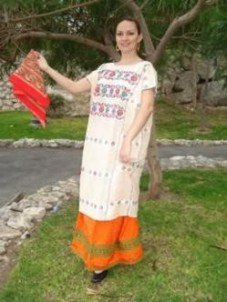 |
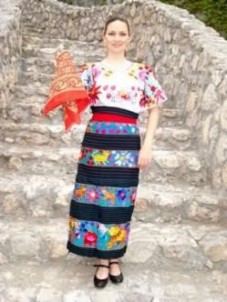 |
"Acateca" costume, popular throughout the Costa Chica.
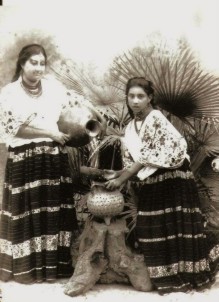 |
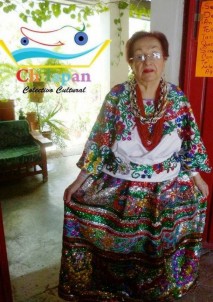 |
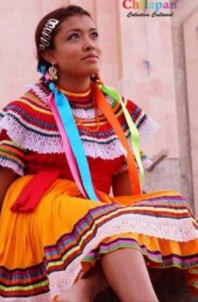 |
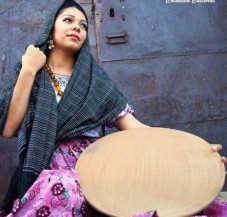 |
The regional Atzacoaloya costume and the Chilapa rebozo "intangible heritage of the state of Guerrero".
dances
dance of the devils
The origins of this dance date back to the colonial era, as a manifestation of the evangelization of the missions that wanted to instill in Indians the basic concepts of the Christian religion, as well as a new conception of the values of good and evil. In this dance there are two main characters: death and lucifer. In addition, at least 6 pairs of devils and 2 or 3 jesters called "huesquistles" appear. In the dance, the elder devil is hitting a donkey jaw, rhythmically; At the same time, at the top of the line, the devil appears, who wears a musical tonadilla with a guitar, which is the accompaniment to the dance. Another devil rhythmically sounds a wooden box. This dance is represented, mainly in: Tixtla, Chilapa, Chilpancingo, Eduardo Neri, etc.
dances
dance of the devils
The origins of this dance date back to the colonial era, as a manifestation of the evangelization of the missions that wanted to instill in Indians the basic concepts of the Christian religion, as well as a new conception of the values of good and evil. In this dance there are two main characters: death and lucifer. In addition, at least 6 pairs of devils and 2 or 3 jesters called "huesquistles" appear. In the dance, the elder devil is hitting a donkey jaw, rhythmically; At the same time, at the top of the line, the devil appears, who wears a musical tonadilla with a guitar, which is the accompaniment to the dance. Another devil rhythmically sounds a wooden box. This dance is represented, mainly in: Tixtla, Chilapa, Chilpancingo, Eduardo Neri, etc.

the demons of teloloapan
Teloloapan's demons are not like the typical devilish characters, representatives of sin and evil. These are patriotic demons, since they originated between 1818 and 1821, during the last stage of the War of Independence. After 8 long years of fighting against the Spaniards, the insurgents had already been defeated in several states of what would become the Mexican Republic. In 1818, there was still a small flame of resistance among the insurgents fighting for their independence in the current state of Guerrero, under the command of General Vicente Guerrero Saldaña. In the north of the State, Pedro Ascencio de Alquisiras, lieutenant and right arm of Don Vicente, commanded the insurgent troops. This band faced the soldiers of the realistic commander Agustín de Iturbide on several occasions.

dance of the tlacoloteros
This dance is considered typical of the State Center region. Its main theme is agriculture; The Tlacololes (cultivated cornfields) have an owner named Tlacololero, who used to chase away the nagual or bad tiger the chirrión, whose sound symbolizes thunder. In this dance, 15 characters participate, in addition to the Pitero, who are: El Maizo, Salvador, El Tlacololero, El Tepachero, El Tellolero, El Tecorrelero, El Jitomatero, El Chile Verde, El Ventarrón, El Rayo Seco, El Colmenero, El Bean , Wonder Dog, El Xocoyotillo and El Tigre. This dance is usually danced in Chichihualco, Taxco, Chilpancingo, Iguala, Atlixtac, Jaleaca, Ocotito and Acapulco, but it can be performed in any other place where the group is invited.

manueles dance
Its origin dates back to the fines of the eighteenth century, and its critical content the customs of the upper social class, so that the lower class could publicly download its registry to the people who humiliated and exploited it. The dress is that of those times, using everything that seems appropriate for the fineness of this dance.
 .
.dance of the males
This represents a group of peasant workers dedicated to the care and tame of the mule beasts, property of the Spanish rich; For this activity, the workers were called "males." The main characteristic by which this dance is identified is because the dancers carry a small head and wooden neck, which represents the mule beast. In this dance, only one person dresses as a woman, wearing clothes from the beginning of the 20th century, just as the woman in the dress was dressed: long petticoats, blouse of plain and flowered fabric, rebozo inscribed at the waist with the tips thrown back on shoulders shoulder to chest and common palm hat. The mask of the cheerful and jovial face of the mestizo woman.

dance of the moors
It is a remembrance of the bloody battles between Moors and Christians, when these were auxiliary by the "crusaders" arrived from all parts of Europe in 1212. Christians are guided by a dancer with the appearance of Mr. Santiago, riding his horse White . Moors and Christians carry long machetes that make each other collide, which gives the idea of a battle. His constant wardrobe of: long sleeveless suede or lapel jacket, light wooden hat, painted black and with ornaments of paper flowers of different colors affected on the abundant edge crespa scalp; The mask represents the white, European type, and simulates thick sideburns and pinch forward. The places where this dance takes place are the municipal seat of Cuautepec and Acapulco, etc.

Thank you for reading and learning many things about this wonderful state.
No hay comentarios.:
Publicar un comentario